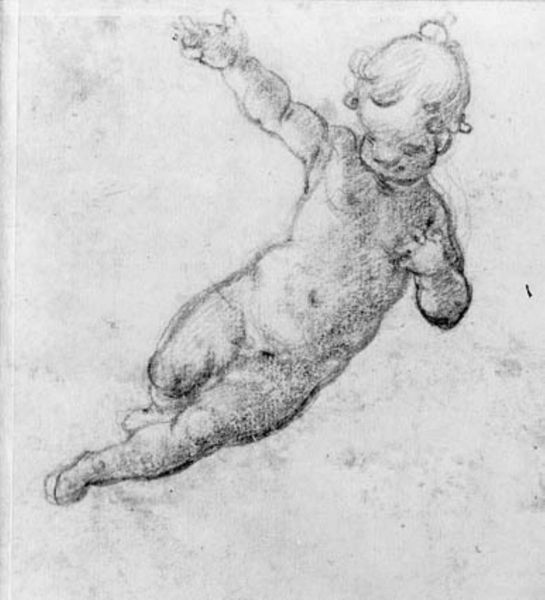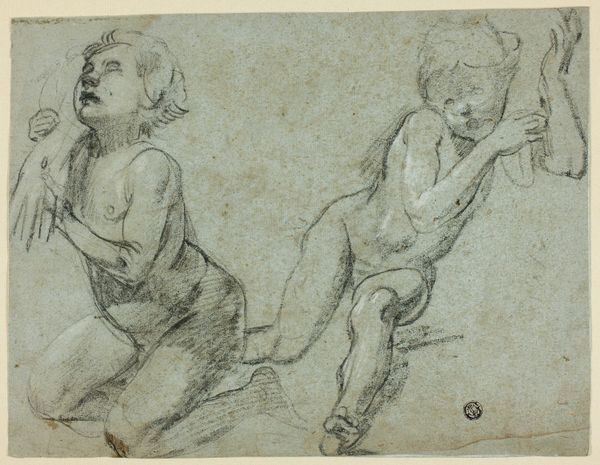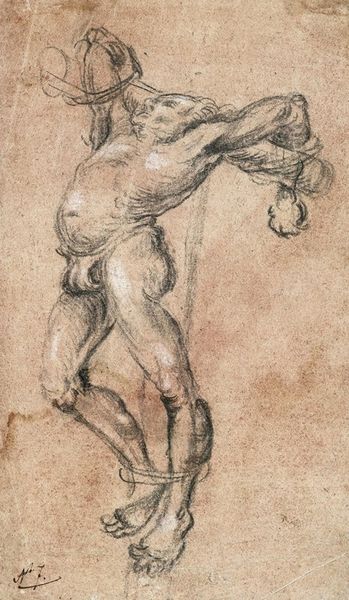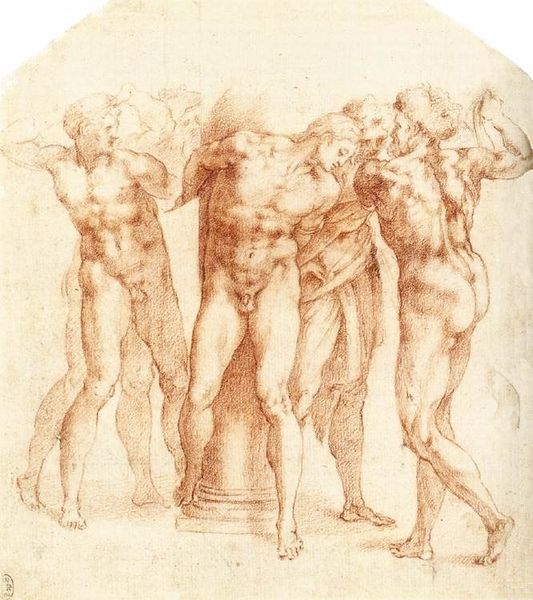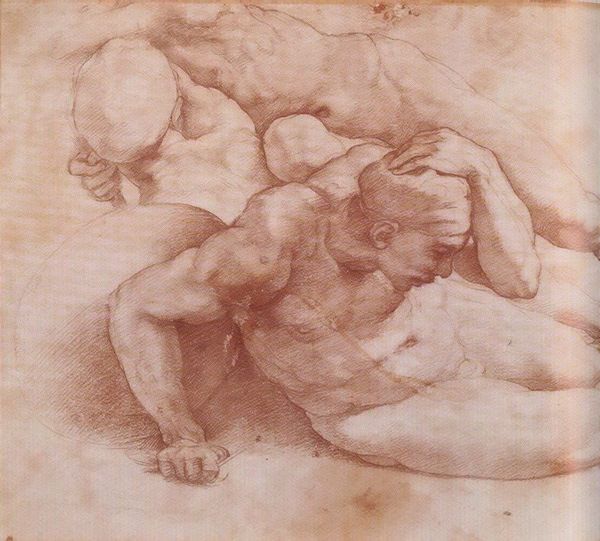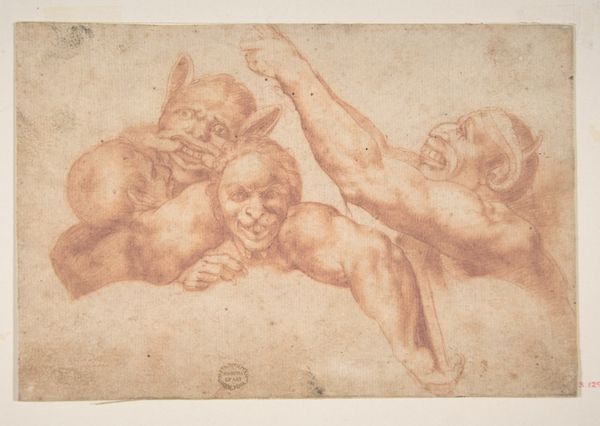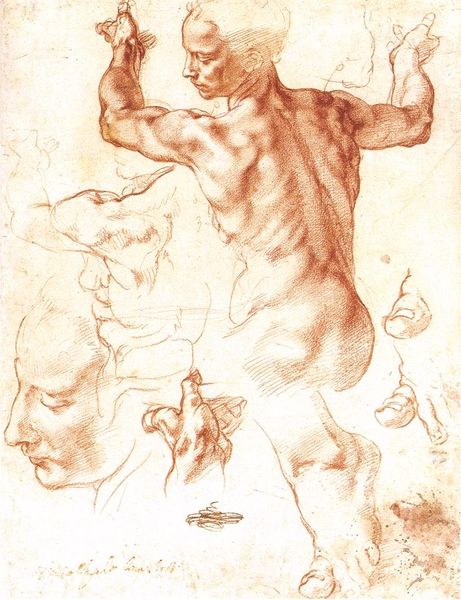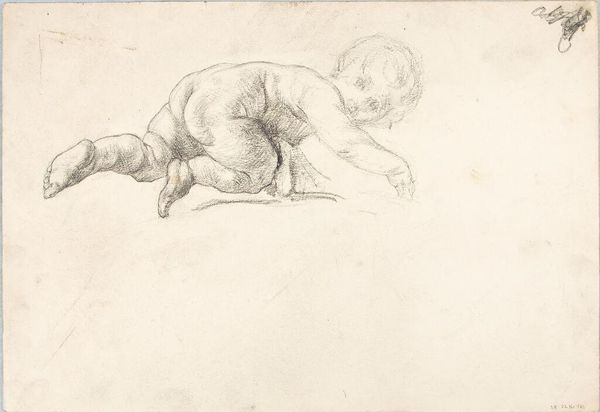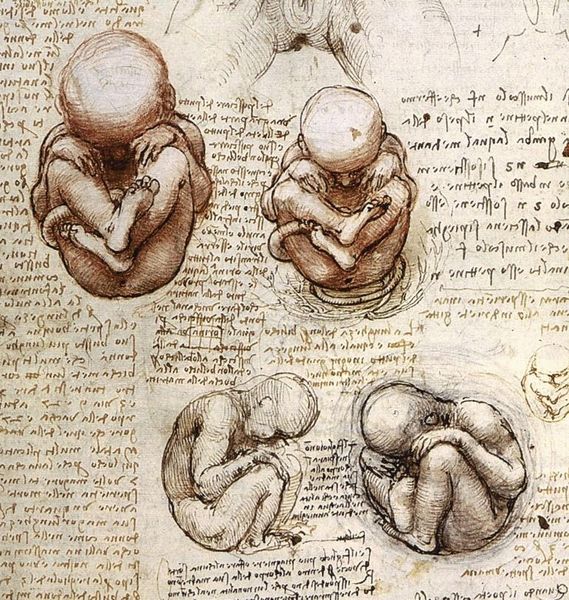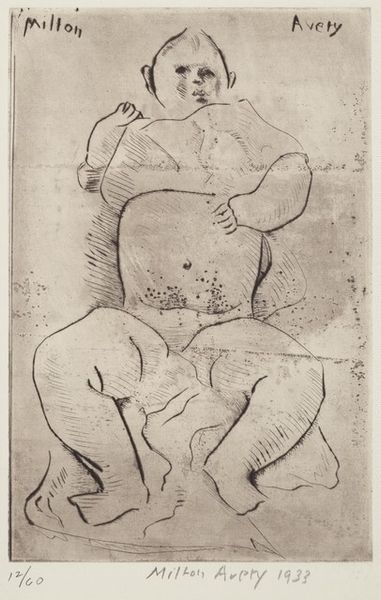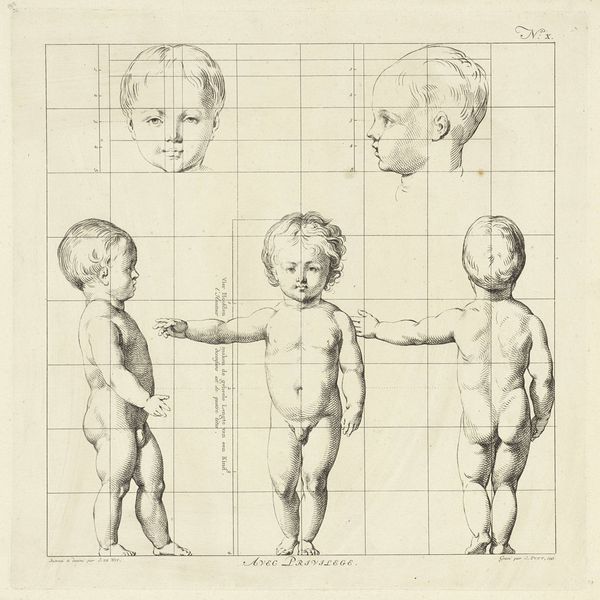
drawing, paper, pencil
#
portrait
#
drawing
#
pencil sketch
#
charcoal drawing
#
figuration
#
paper
#
pencil drawing
#
pencil
#
italian-renaissance
#
early-renaissance
Copyright: Public domain
Curator: Immediately, there's a softness that pervades the sketch; an intimacy. Editor: Indeed. We're looking at Leonardo da Vinci's "Study of a Child," dating back to around 1508. It resides at the Uffizi Gallery in Florence. Predominantly rendered in pencil and perhaps charcoal on paper, this piece really highlights Leonardo's keen eye for anatomical study. Curator: The layering is phenomenal, particularly visible in the head detail at the bottom left—a masterclass in chiaroscuro even in a sketch format. Note how each pose conveys something different, each reflecting nascent movement. It gives us the possibility of seeing the artist experimenting to grasp how movement can be depicted. Editor: What strikes me is the economy of line, each mark serving to define the volume and musculature, almost like a sculptural investigation put to paper. What type of paper would the drawing had been done on, and would the process, its texture and roughness or smoothness, determined Da Vinci's mark-making technique? We know from other surviving drawings the paper-making techniques employed at the time, and the trade in paper that flourished through certain centers like Florence. Curator: That's a fascinating thought. I wonder too how this preliminary investigation of form contributes to our later readings of figures like the Christ Child. Editor: Consider the social implications: accessing paper, pencils, and even the time and setting to do such studies would not have been available to all in society at the time. Da Vinci worked through patronage that would allow access to models and materials for his creative experimentation. Curator: True. Nevertheless, within the constraints of available resources, Leonardo explores line quality with unparalleled artistry. Editor: And so, beyond the aesthetic qualities and Da Vinci’s formal genius, lies also a rich tapestry of material processes and access that underpinned such artistic achievements. Curator: Yes, the materiality of the support emphasizes form here. An extraordinary testament to observation and technique, perfectly realized.
Comments
No comments
Be the first to comment and join the conversation on the ultimate creative platform.

